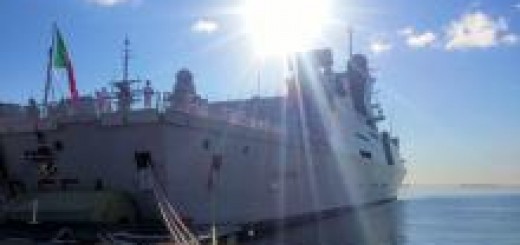Canada to acquire MQ-9B SkyGuardian Drones to monitor Arctic Ocean

{loadposition bannertop}
{loadposition sidebarpub}
The Canadian government has confirmed its plans to enhance its technological presence in the Arctic by purchasing 11 high-tech drones from an American company for a total of $2.5 billion. These MQ-9B SkyGuardian drones, manufactured by General Atomics, will be based at 14 Wing Greenwood in Nova Scotia and 19 Wing Comox in British Columbia, with some of their missions also focusing on the Arctic.Follow Army Recognition on Google News at this link
General Atomics MQ-9B SkyGuardian Drone (Picture source: Canada MoD)
Originally, the drones were to have their own advanced operational site in the Arctic to facilitate specific operations with two aircraft and maintenance personnel. However, this plan has been modified. The drones will now be deployed as needed at existing advanced operational bases in the Arctic, sharing space with other Royal Canadian Air Force planes. These bases will benefit from new or renovated hangars, integrated into NORAD’s modernization efforts.
The Arctic environment poses particularly rigorous challenges for drone operations. Extreme conditions, with temperatures dropping to -35 degrees Celsius, isolated and icy runways, and limited satellite coverage, require specific adaptations. The transmission of flight instructions and surveillance data is crucial, and adapting the drones to these constraints has delayed delivery initially scheduled for 2025 to 2028.
In addition to environmental challenges, the lack of experience among Canadian military personnel in operating large drones has been noted as an additional obstacle. Nevertheless, the MQ-9B SkyGuardians are designed to be versatile, capable of carrying various weapons, including 250- and 500-pound bombs, as well as low-collateral-damage munitions, for both domestic and international missions.
In addition to surveillance and attack missions on international targets, the drones will play a crucial role in national sovereignty patrols, surveillance of major events, and information gathering during natural disasters.
A new $65 million command center is also under construction in Uplands, Ottawa, and is scheduled to be completed by 2028. This 6,000 square meter facility will house nearly 200 military personnel responsible for operating and controlling the drones. This announcement follows a controversy where the Canadian Forces and National Defence initially declared the location secret, although public documents later clarified and exposed the details of the project.
This investment in drone capabilities underscores Canada’s commitment to maintaining its sovereignty in the Arctic while modernizing its defense capabilities in cooperation with NORAD’s requirements, despite the daunting challenges posed by the Arctic environment.
The MQ-9B SkyGuardians are designed for long-endurance missions, capable of flying for over 28 hours over distances up to 7,200 kilometers. They will operate with a maximum take-off weight of 5,670 kilograms and can reach speeds of up to 390 km/h, with an operational ceiling of 13,500 meters. The fleet will include six remote cockpits, manned by pilots, sensor operators, and mission intelligence coordinators, allowing the Canadian Armed Forces to conduct extensive surveillance operations using a variety of sensors.

{loadposition bannertop}
{loadposition sidebarpub}
The Canadian government has confirmed its plans to enhance its technological presence in the Arctic by purchasing 11 high-tech drones from an American company for a total of $2.5 billion. These MQ-9B SkyGuardian drones, manufactured by General Atomics, will be based at 14 Wing Greenwood in Nova Scotia and 19 Wing Comox in British Columbia, with some of their missions also focusing on the Arctic.
General Atomics MQ-9B SkyGuardian Drone (Picture source: Canada MoD)
Originally, the drones were to have their own advanced operational site in the Arctic to facilitate specific operations with two aircraft and maintenance personnel. However, this plan has been modified. The drones will now be deployed as needed at existing advanced operational bases in the Arctic, sharing space with other Royal Canadian Air Force planes. These bases will benefit from new or renovated hangars, integrated into NORAD’s modernization efforts.
The Arctic environment poses particularly rigorous challenges for drone operations. Extreme conditions, with temperatures dropping to -35 degrees Celsius, isolated and icy runways, and limited satellite coverage, require specific adaptations. The transmission of flight instructions and surveillance data is crucial, and adapting the drones to these constraints has delayed delivery initially scheduled for 2025 to 2028.
In addition to environmental challenges, the lack of experience among Canadian military personnel in operating large drones has been noted as an additional obstacle. Nevertheless, the MQ-9B SkyGuardians are designed to be versatile, capable of carrying various weapons, including 250- and 500-pound bombs, as well as low-collateral-damage munitions, for both domestic and international missions.
In addition to surveillance and attack missions on international targets, the drones will play a crucial role in national sovereignty patrols, surveillance of major events, and information gathering during natural disasters.
A new $65 million command center is also under construction in Uplands, Ottawa, and is scheduled to be completed by 2028. This 6,000 square meter facility will house nearly 200 military personnel responsible for operating and controlling the drones. This announcement follows a controversy where the Canadian Forces and National Defence initially declared the location secret, although public documents later clarified and exposed the details of the project.
This investment in drone capabilities underscores Canada’s commitment to maintaining its sovereignty in the Arctic while modernizing its defense capabilities in cooperation with NORAD’s requirements, despite the daunting challenges posed by the Arctic environment.
The MQ-9B SkyGuardians are designed for long-endurance missions, capable of flying for over 28 hours over distances up to 7,200 kilometers. They will operate with a maximum take-off weight of 5,670 kilograms and can reach speeds of up to 390 km/h, with an operational ceiling of 13,500 meters. The fleet will include six remote cockpits, manned by pilots, sensor operators, and mission intelligence coordinators, allowing the Canadian Armed Forces to conduct extensive surveillance operations using a variety of sensors.





